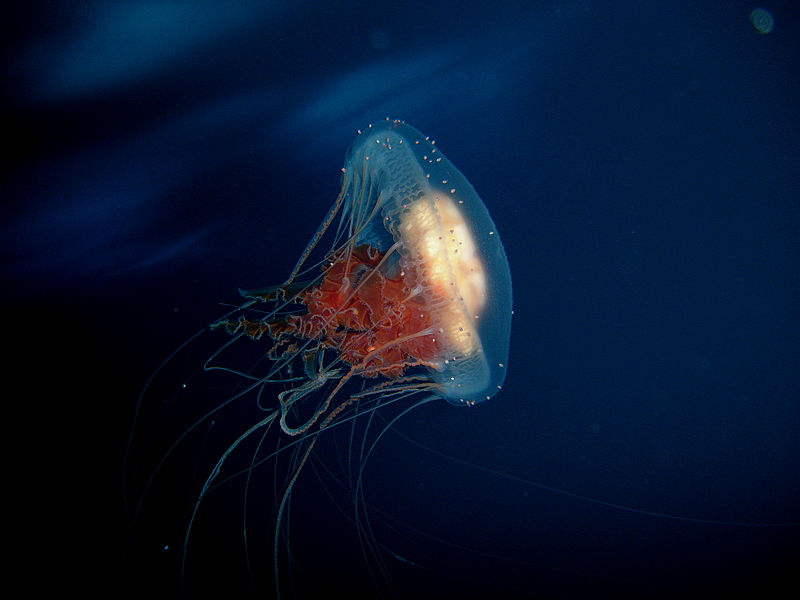Can a jellyfish unlock the secret of immortality?
November 29, 2012

(Credit: Henry Kaiser, National Science Foundation/Wikimedia Commons)
The jellyfish can transform itself back to a polyp, the organism’s earliest stage of life, author Nathaniel Rich writes in The New York Times.
During rejuvenation, it undergoes cellular transdifferentiation, an unusual process by which one type of cell is converted into another — a skin cell into a nerve cell, for instance. (The same process occurs in human stem cells.)
It is possible to imagine a distant future in which most other species of life are extinct but the ocean will consist overwhelmingly of immortal jellyfish, a great gelatin consciousness everlasting.
“There’s a shocking amount of genetic similarity between jellyfish and human beings,” said Kevin J. Peterson, a molecular paleobiologist. This may have implications for medicine, particularly the fields of cancer research and longevity. Peterson is now studying microRNAs (miRNAs), tiny strands of genetic material that regulate gene expression. MiRNA act as an on-off switch for genes.
Hydrozoans like the jellyfish provide an ideal opportunity to study the behavior of miRNA. They are extremely simple organisms, and miRNA are crucial to their biological development.
“Immortality might be much more common than we think,” Peterson said. “There are sponges out there that we know have been there for decades. Sea-urchin larvae are able to regenerate and continuously give rise to new adults. This might be a general feature of these animals. They never really die.”
(More)